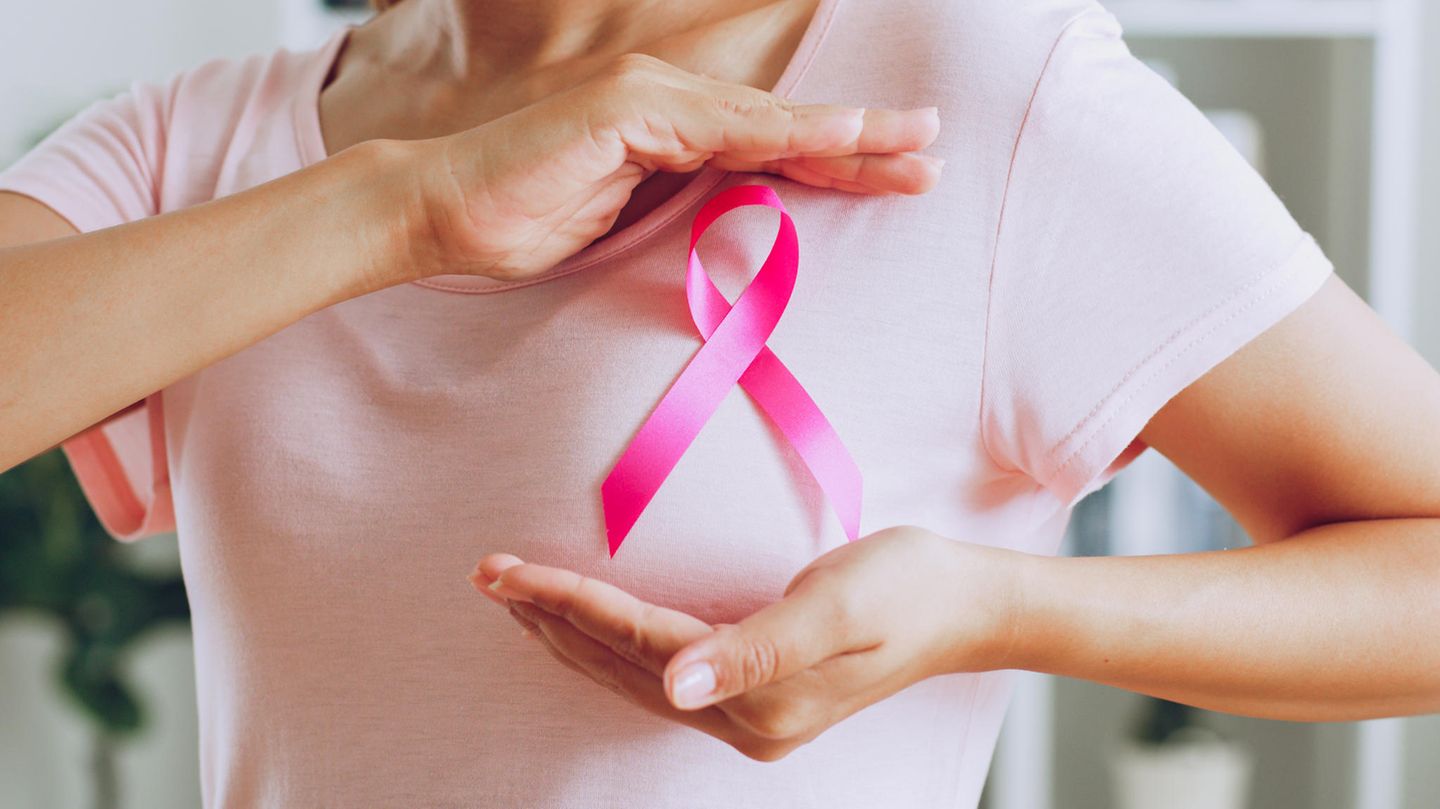
According to a recent study, not many women know that they can influence their own breast cancer risk to a certain extent. The role of breast density in breast cancer.
According to the Robert Koch Institute, breast cancer is the most common type of cancer in women with around 71,000 new cases each year. In addition to family history, a high-fat diet, alcohol and cigarette consumption, lack of exercise, and dense breast tissue are also risk factors for breast cancer.
A current study shows that many women cannot assess what these risk factors mean – and above all underestimate breast density as a risk factor.
What is the density of the breast?
A woman’s breast is composed of adipose and glandular tissue. The breasts of women with dense breast tissue or high breast density consist largely of connective and glandular tissue and contain little adipose tissue. Younger, lower-weight women tend to have denser breast tissue.
But: how high the fat, connective and glandular tissue in the breast depends on the hormone level. Because of this, breast density can increase and decrease during the menstrual cycle. During menopause, most women’s breast density decreases due to the retraction of glandular tissue.
How firm or big the breast is has nothing to do with breast density. The density of breast tissue cannot be felt, but can only be seen with a mammogram (mammogram). However, due to cycle-related changes, breast density may be assessed differently after multiple examinations.
How are breast density and breast cancer risk related?
When a mammogram is taken, fatty tissue appears in dark colors in the image – glandular and connective tissue appears in white in the image. Women with very dense breasts are more likely to miss a lump on a mammogram than women with fatty breasts.
Breast density in women is usually divided into four categories ranging from “the breast is composed mostly of adipose tissue” to “the breast is composed almost entirely of glandular and mammary tissue”. In a small study from 2000, the authors hypothesized that mammographic accuracy could drop from 80 percent in the case of somewhat fatty breasts to only 30 percent in the case of densely packed breasts.
Other studies have found that mammography detects nearly 100 percent of tumors in women with extremely fatty breasts. And in women in category 4, that is, women with the highest percentage of glandular tissue, about 50 percent of tumors are still detected. In general, mammography is rated as a reliable screening test and many tumors are also detected in women with high breast density.
According to current knowledge, high breast density is a risk factor in and of itself. According to current knowledge, women with increased breast density do not have an increased risk of dying from breast cancer. Dr. explains. Arif Kamal of the American Cancer Society told Medical News Today.
How do women rate breast density as a risk factor?
The researchers in the current study published their findings in the journal Gamma Networks. The researchers interviewed 1,858 women, ages 40 to 76, who had no history of breast cancer and had recently had a mammogram. Study participants were asked to compare breast density to five other risk factors for breast cancer:
- A first-degree relative with breast cancer
- Overweight or obesity
- More than one alcoholic drink per day
- there is no children
- Previous breast biopsy
“Compared to other, perhaps more well-known risks of developing breast cancer, women did not see breast density as a significant risk,” Laura Pedler, study author and researcher at the Dartmouth Institute for Health Policy and Clinical Practice, told CNN. . 93 percent of the women surveyed assume that the risk of breast cancer is higher if a close relative has had cancer compared to women with high breast density.
The study authors concluded that denser breast tissue is associated with a 1.2- to 4-fold increased risk of breast cancer, compared to a 2-fold increased risk of breast cancer if a first-degree relative had breast cancer.
However, breast density alone cannot assess a woman’s risk of developing cancer. Age and genetic influences play an important role in the development of breast cancer. This means that a woman’s risk of developing breast cancer can only be estimated if all risk factors are taken into account. A third of those surveyed said there was nothing they could do to reduce their risk of developing breast cancer.
Should women with high breast density undergo further examinations?
Some doctors recommend an ultrasound in addition to a mammogram for women with high breast density. This is intended to help tumors that are difficult to recognize on an X-ray image to be detected better. However, it is not clear whether this additional examination makes sense or not.
Breast cancer, chlamydia, human papilloma virus
Which checks really make sense for women
How can women reduce the risk of breast cancer?
The CDC recommends the following to reduce the risk of breast cancer:
- Maintain a healthy weight
- Being physically active
- Abstain from alcohol or drink only moderate amounts
- Anyone undergoing hormone replacement therapy or using hormonal contraceptives should ask their doctor about the risks and clarify with him or her whether the medications are appropriate.
- Women who give birth should breastfeed (if possible).
- Women with a family history of breast cancer should tell their gynecologist to assess their personal risk.
Sources:Study of breast cancer and breast densityAnd medical news today,CNNAnd Health informationAnd Examination of blast intensity and tumor detectionAnd German Cancer Society 1And German Cancer Research CentreAnd RKI Cancer DataAnd Institute for Quality and Efficiency in Health CareAnd German Cancer Society 2And Center for Disease Control
